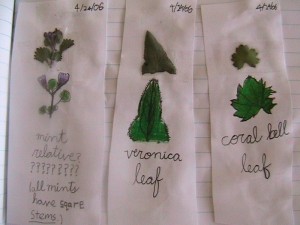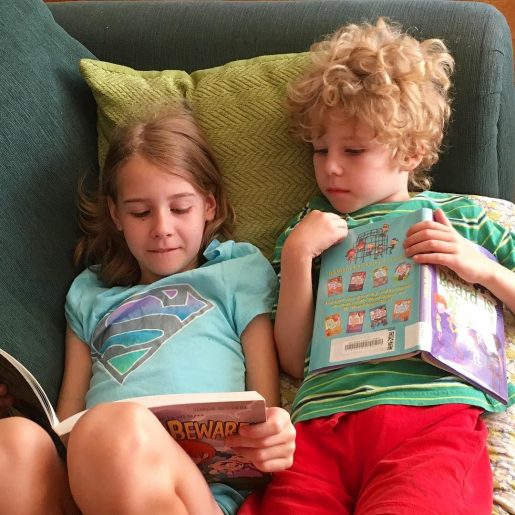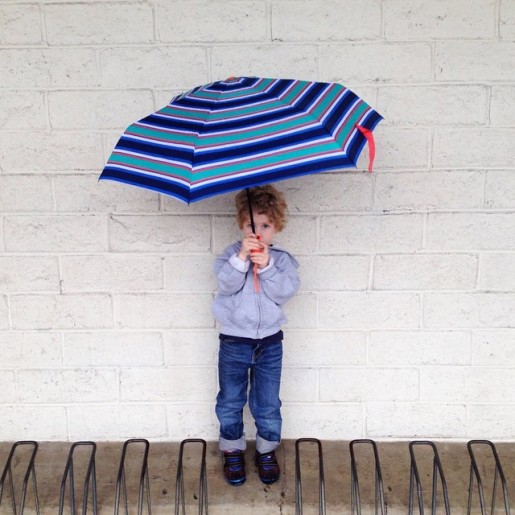day fourteen: all about weeds

1.
A bonus post for today! But this one’s mostly for me: another little addition to our family collection of All About Weeds stories.
Strangely, I can’t find the first All About Weeds story in my archives. I’m sure I must have written about it here! But maybe not. Maybe it was pre-Bonny Glen, a tale posted to a homeschooling message board instead. I suppose it must have been, now I think about it: my Amazon history tells me I purchased the book on July 13, 2002. And it entered our lives as a library book some time before that. Which fact (its being a library book) provides the drama of the first anecdote, actually.
2.
We’d moved to Virginia only a few months earlier (on New Year’s Day, 2002, as a matter of fact). When spring arrived, O glorious mid-Atlantic spring with its abundance of dogwood and redbud blossoms, I was in a mania to know every single plant growing in our yard. Among the books I checked out from the adorable train-depot-turned-library in our little town was a rather dusty tome about weeds. I did say every plant.
I flipped through the weed book but I found it rather dry, and besides, I was sidetracked by what would become a years-long obsession with Noah’s Garden: Restoring the Ecology of Our Own Backyards. (Chip, meet block.) All About Weeds sat neglected (so I thought) on a table for a day or two, and then I returned it to the library.
Soon after, Jane (age sevenish, I think? heavens, that was a long time ago) came to me, came to me all in a dither. Where, she begged most earnestly to know, WHERE was that fascinating weeds book?
When I told her I’d returned it to the library, she was crushed. It was the BEST BOOK EVER, I was informed (in tones conveying, yes, both capitals and italics). Full of the MOST INTERESTING information.
And as my shopping history testifies, so persuaded was I of the merits of this superior tome that I purchased a copy for keeps.
3.
The best and perfect weed book makes a number of appearances on this blog, even if its origin story has been lost to the archives of some distant Yahoogroup. “Bonny Glen Firsts” (published in 2011) tells me it was in fact the second book I ever mentioned here:
Second book mentioned (though not by name): All About Weeds, a Jane favorite for years. Seriously.
(Ah, there you go. Not mentioned by name. I’ll have to dig up that post.)
I find it mentioned in a March, 2006 post called “The Tide Is Going Out“—an early exploration of my tidal homeschooling concept.
The other day a neighbor asked me if we take a spring break. I laughed and said, “Yes—the whole spring!”
We’ve had such a pleasant time the last couple of months, immersing ourselves in some good books and other forms of study. Now the outdoors is beckoning, and our daily rhythms are shifting. Spring is calling us, urging us out of the house. We are a bunch of Mary Lennoxes, unable to resist the rustlings and chirpings, the spikes of green, the gypsy winds.
I keep finding cups of water on the counter with tiny blossoms floating like fairy lily pads: the first bluets and starry white chickweed flowers. Chickweed, so Jane tells me, is an edible plant and quite tasty. (“Like sugar snap pea pods, Mom.”) She has begged me not to uproot the vast patch of it that has taken over a stretch of our backyard mulch bed, just uphill from the strawberries. Another weed, a purple-flowered plant the children call “cow parsley,” is popping up all over the lawn, much to their delight: they suck the nectar from the itty bitty orchid-like blossoms and proclaim it better than the honeysuckle they’ll seek out later in the summer.
Jane, who had been binging on math during the past three weeks, seems to have shifted her attentions to botany. I find myself tripping over her tattered copy of All About Weeds everywhere I go, and upstairs, the microscope is much in demand for the viewing of leaf cross sections. An experiment involving scarlet runner beans has become the centerpiece on the kitchen table.
So there we are, four years later, and Weeds is still in constant use. It seems wee 2002 Jane hadn’t been overstating her affections.
A month after that, April 2006: “Things to Do While Your Mother Is in the Hospital” (delivering your baby sister). This one—which is the post that sparked today’s story and this entire trip down memory lane—made me laugh pretty hard. (Not at poor Rose’s plight. At The Book’s role in her recovery.)
If you are seven…
…get stung under the chin by a wasp.
If you are ten…
…recall a passage from that scintillating classic, All About Weeds, describing the sting-soothing properties of yarrow, and concoct a poultice of newly emerging yarrow leaves with which to soothe your little sister’s wasp sting.
Well done, young Jane!
4.
Which brings me to today. Huck’s birthday post keeps turning up melt-my-heart tidbits in the “related posts” widget at the bottom of the page. I was clicking along a little baby-picture rabbit trail when I happened upon the “things to do” post above. Rilla, who was aww-ing over my shoulder at her adorable baby brother’s toddler antics, was transfixed by this glimpse at what her big sisters were up to on the day she was born. She read the post breathlessly, pausing only to interject “Oh, I love that book!” at the bit about “that scintillating classic.”
The chip doesn’t fall far from, er, the older chip.
5.
We found the book, you know, during last week’s grand shelf-cleaning. It has been returned to its permanent spot on Jane’s bookcase.










